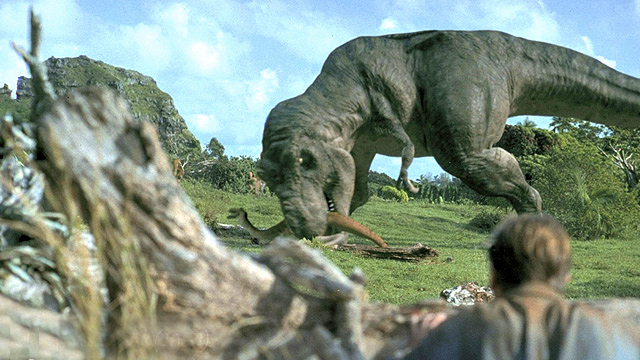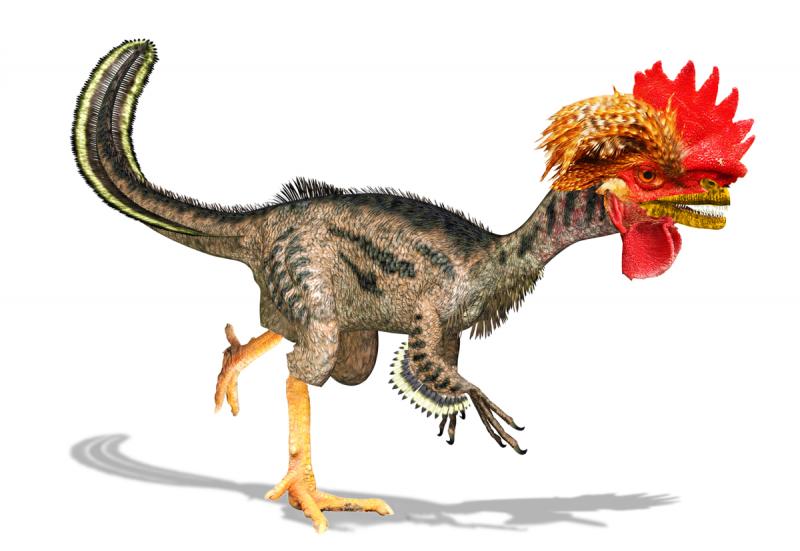In the first Jurassic Park movie a flock of ostrich-like dinosaurs race past when suddenly a giant T-rex leaps out and snags one.
Huddling behind a fallen tree, actor Sam Neill tells the terrified kids, “bet you never look at birds the same way again…”
For him, both the Gallimimus and the T-rex are just very big birds.
Neill’s character is based on real-life paleontologist Jack Horner, curator of Montana’s Museum of the Rockies who has served as the technical advisor for all the Jurassic Park movies, including Jurassic World.
Horner was at NEOMED recently to meet with some of his former students, and talk about a pet project: turning a modern bird back into a dinosaur, sort of.
He says Jurassic Park was fictional because dinosaur DNA does not exist, it's just too fragile to survive millions of years.
"But then it dawned on me," says Horner, "that we have dinosaur DNA in birds.”
Inside every chicken lies the dormant genes for teeth, claws and a tail that are one-by-one turned off as a little dino-embryo becomes a bird. Horner and his collaborators are trying to trick those genes into turning back on.
The result is chickenosaurus.
“Basically it’s still a bird," says Horner, "just a bird with a long tail, and arms and hands instead of wings, and teeth…it’s still a bird...but a bird is still a dinosaur.”
 It could happen. Genes for bird teeth have been found, and last year a team at Harvard engineered a chicken embryo to have a snout like an alligator instead of a typical bird beak. It could happen. Genes for bird teeth have been found, and last year a team at Harvard engineered a chicken embryo to have a snout like an alligator instead of a typical bird beak.
It’s slow going, but that doesn’t bother Horner.
“This is about learning about science," he says, "and it’s about how evolution works and a lot of other things.”
Meanwhile one of Horner’s former students is exploring birds’ dino origins from the skin in, rather than from the bones out.
Putting feathers on dinosaur bones
Tobin Hieronymus teaches human anatomy at NEOMED, but the bone he's holding up looks like it could have once been covered in barbecue sauce.
“This is a chicken finger," he tells me, the same bone as the lower part of my pointer finger. Each bird wing, he says, holds ten primary feathers.
"That first finger bone," Hieronymus says, "that's where primary feathers eight and nine attach, on that little flange.”
He explains the parallel between the chicken finger and its fearsome ancestor.
“There are bumps just like this on velociraptor forelimbs as well,” he says.
Many flightless dinosaurs like velociraptor had feathers, perhaps for insulation or display, and Hieronymus is painstakingly mapping bird skin, ligaments, and muscles of modern birds to understand how those systems worked in their extinct dinosaur kin.
Molecular paleontology digs up old molecules
Mary Schweitzer is another former student of Jack Horner.
She teaches molecular paleontology at North Carolina State University.
Schweitzer pretty much invented the field in the 1990’s when she dissolved a T-Rex bone from Montana'a Hell Creek formation to see what was inside it.
Horner had given her the bone to examine and she surprised him first by telling him that it was from a pregnant female. That’s because the T-Rex bone had special structures that help it form eggshells, just like a chicken.
Her next discovery shocked Horner and the world.
“This work is very, very controversial," she says, describing how she let the T-Rex bone soak a little too long, until all the bone had dissolved, "and we went to pick it up out of the solution and it sort of stretched all over the place, not quite like a rubber band, but almost.”
It was dinosaur collagen.
“And that’s not really possible,” she says.
Soft tissue survives millions of years
But Schweitzer discovered that the fibrous protein found in bones and skin of almost every animal, including humans, had survived intact for 65 million years.
 She sequenced the collagen protein, tested it with avian antibodies among other analyses, and discovered it’s identical to the type found in birds. She sequenced the collagen protein, tested it with avian antibodies among other analyses, and discovered it’s identical to the type found in birds.
Schweitzer has since found other seemingly impossible molecules including dino heme, the compound found in red blood cells, and beta-keratin, the major component of feathers.
But when it comes to creating a chickenosaurus, she’s not so sure.
“I think it would be pretty cool to see if we can resurrect some of these traits," But on the other hand says Schweitzer, "I grew up with chickens and the idea of gathering eggs from one with teeth is not pleasant.”
And as for a real-life dino-park, she says that’s better left to Hollywood.

Source:LiveScience
|